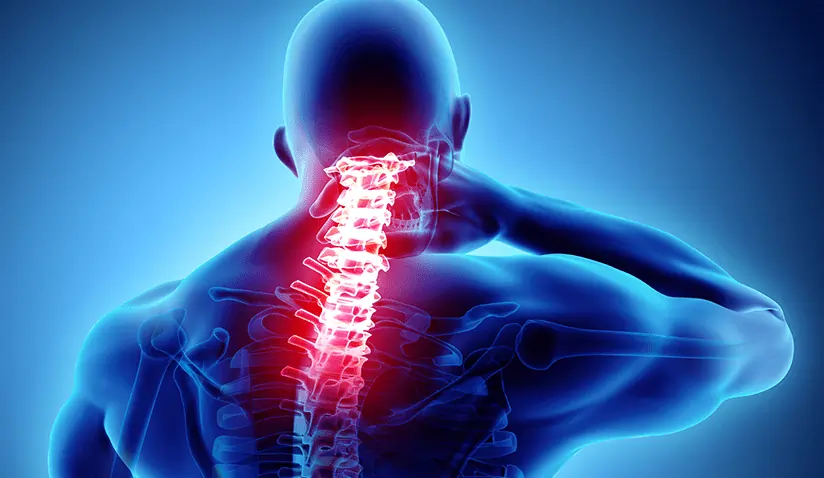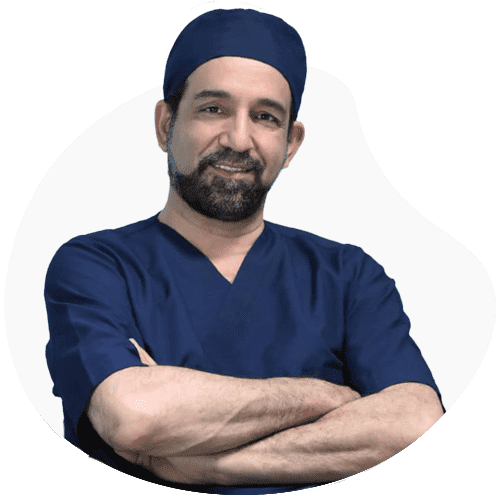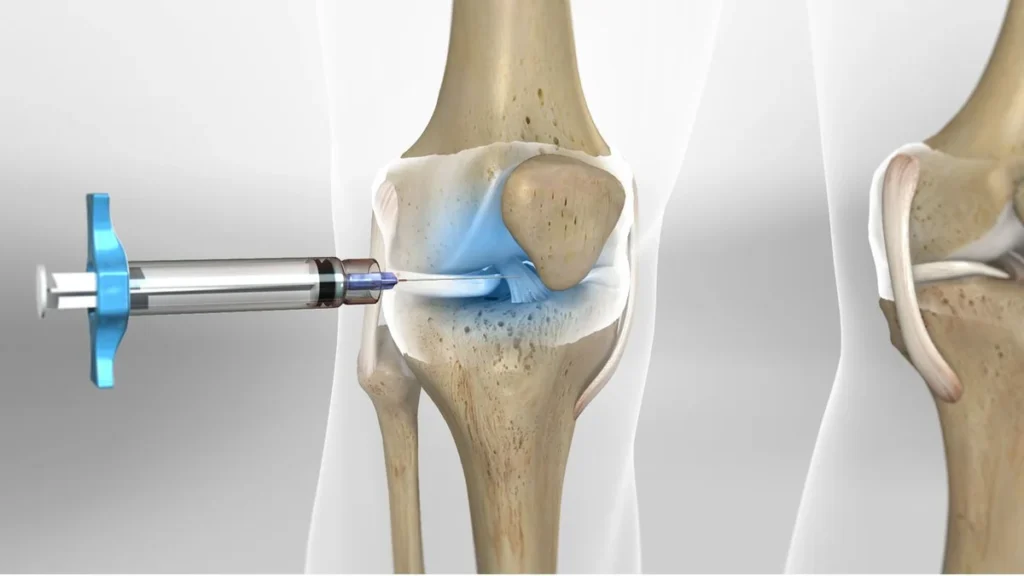Introduction of Cervical Disc
Have you ever experienced recurring pains in your neck or back? Often, these pains may be attributed to fatigue or work pressure. But what should you do when these pains become a daily pattern and affect your everyday life?

- Introduction of Cervical Disc
- Understanding the Structure of the Spine
- How to Deal with Neck and Back Pains?
- Key Points
- The Role of Discs in Body Structure
- Problems Arising from Discs
- Neck Pain from Cervical Disc
- Cervical Disc Herniation
- Ways to Manage Pain
- Symptoms and Causes of Cervical Disc Herniation
- Diagnosis of Cervical Disc Herniation
- Prevention
- Tests and Treatments Related to Neck Pain
- Research and Findings
- Epidural Steroid Injection
- Advancements and Improvements
- Guide to Non-Surgical Treatments for Cervical Disc
- Post-Treatment Guidelines for Cervical Disc
- Preventing the Recurrence of Cervical Disc Problems
- Maintaining Neck Health and Preventing the Recurrence of Cervical Disc Problems
- Frequently Asked Questions
If you are facing persistent pains, it might be a symptom of issues like a cervical disc problem. In such cases, it’s advised to consult a specialist doctor for a thorough examination and attention to your symptoms, to identify the cause of the problem and provide a suitable treatment plan.
Understanding the Structure of the Spine
The spine is composed of 33 vertebrae that are connected. The vertebrae are categorized and numbered based on their position in the spine. Between every two vertebrae, there is an intervertebral disc that acts as a cushion and prevents direct contact between the vertebrae.
How to Deal with Neck and Back Pains?
If you continuously experience neck or back pains, visiting an orthopedic specialist can help you find the cause of the problem and implement appropriate treatment methods. If the pains are temporary but you still need consultation, you can connect with an orthopedic specialist through online consultation.
Key Points
- If the pains persist, consult a specialist to diagnose the cause of your problem.
- Awareness of the structure of the spine and the function of the intervertebral discs can help in better understanding the issues.
- Using appropriate and timely treatment methods can prevent the progression of diseases and reduce the need for more complex treatments.
- By consulting a specialist and precisely following treatment recommendations, you can regain your health and enjoy a life without pain.
The Role of Discs in Body Structure
Discs are cartilaginous elements situated between the vertebrae of the spine, serving as protective cushions. These discs consist of a water-rich gel-like center, protected by a tough fibrous outer layer. They assist in absorbing shocks and pressures exerted on the spine during movement.
Problems Arising from Discs
Discs are located near major spinal nerves, and in cases of herniation or rupture, they can exert significant pressure on these nerves, causing pain. In severe cases, the pressure on the spinal cord may lead to weakness and necessitate surgery.
Neck Pain from Cervical Disc
Your neck contains seven discs, which, due to increased pressure and rotation, are more prone to injury. Neck pain can be due to nerve damage, inflammation, or muscle spasms.
Cervical Disc Herniation
The cervical discs act as cushions separating the bones and facilitating smooth and regular movement of the head and neck. Herniation or protrusion of a disc can lead to pressure on the neck nerves, causing pain. In some cases, surgery and replacement with an artificial disc may be necessary.
Ways to Manage Pain
Neck pain and issues arising from disc herniation are common problems in adults. For managing this type of pain, accurate diagnosis and appropriate treatment by an orthopedic specialist are essential. Through consultation and thorough examination, the doctor can provide suitable treatment strategies to reduce pain and improve the function of the neck and spine.
Symptoms and Causes of Cervical Disc Herniation
Symptoms: Cervical disc herniation may cause symptoms like pain in the neck, arm, and shoulder, or even numbness and tingling in the arm and hand. The pain can range from vague to acute and noticeable. If you encounter muscle weakness in the arm, immediate consultation with a doctor is advised.
Causes: Natural age-related changes, poor body posture, and improper methods of lifting weights can lead to cervical disc herniation. Over time, discs wear out and shrink, potentially causing pressure on the spinal cord or nerve roots.
Risk Factors: Unhealthy lifestyle, aging, overweight, physically demanding jobs, family history, and tobacco use are factors that increase the risk of disc herniation.
When to See a Doctor: If you experience symptoms of disc herniation, it is crucial to consult a doctor promptly for timely and appropriate treatment.
Diagnosis of Cervical Disc Herniation
A doctor can determine the exact location of pain through a neurological examination and a complete medical history. Imaging tests are also used to confirm the diagnosis.
Prevention
Maintaining a healthy lifestyle, including proper nutrition, regular exercise, and avoiding tobacco use, can reduce the risk of disc herniation. If you are at risk, consulting with a medical specialist is essential to discuss preventive and treatment measures and improve your quality of life.
Tests and Treatments Related to Neck Pain
Tests:
- X-Ray: Used to examine the bone structure of the spine.
- Magnetic Resonance Imaging (MRI): Produces detailed images of the spinal cord and nerve roots using a strong magnetic field.
- Computed Tomography (CT) Scan: Generates cross-sectional images of the spine from different angles.
- CT Myelogram: Involves injecting dye into the spinal fluid to visualize pressure on the spinal cord or nerves.
- Neurological Tests: Measure the electrical signals of nerves to identify the location of damage.
Non-Surgical Treatments:
- Rest: Rest may be beneficial in reducing symptoms for minor disc herniation.
- Rehabilitation and Physiotherapy: If symptoms do not improve with rest, rehabilitation may be necessary.
- Spinal Traction: Performed by a physiotherapist to reduce pressure on the discs.
- Medication
- Epidural Steroid Injection
Surgery:
- Discectomy: Surgery may be necessary if pain and symptoms do not reduce with non-surgical treatments. Discectomy involves removing part or all of the damaged disc.
- Laminectomy: In some cases, part of the lamina must be removed to access the herniated disc.
Recovery: After surgery, patients may temporarily experience pain or muscle spasms. Post-surgical care includes keeping the incision area dry and clean, avoiding driving, lifting heavy objects, and using pain medications. Recovery time depends on the severity of the condition and the type of surgery.

To make an appointment or get an online consultation with Dr. Nader Motallebi Zadeh, Limb lengthening surgeon, proceed here.
Research and Findings
Studies have shown that many cases of cervical disc herniation improve over time without surgery. Extensive reviews of published studies indicate that most patients have fewer symptoms and better conditions after two to three years.
Epidural Steroid Injection
Although many studies support the effectiveness of this method in patients who do not respond to primary treatments, there is a lack of high-quality, randomized studies. However, recent advancements in techniques and safety have improved outcomes.
Advancements and Improvements
New techniques include extensive use of radiological guidance for injections, improved quality of fluoroscopy imaging, and specific recommendations for precise injection execution. These advancements help increase the effectiveness and safety of non-surgical treatments.
Guide to Non-Surgical Treatments for Cervical Disc
- Rest and Neck Movement Limitation:
- In the early stages, avoiding repetitive movements and lifting heavy objects can be helpful.
- Using a neck brace is recommended to limit movement and provide rest.
- Medication:
- Anti-inflammatory drugs, especially in the initial stages, can be prescribed by a doctor.
- Medications like Gabapentin and Pregabalin are used for pain relief from radiculopathy.
- Physiotherapy:
- A physiotherapist can use intermittent traction for pain relief.
- As pain reduces, strengthening exercises and increasing range of motion can aid in the recovery of the neck and shoulder area.
- Epidural Steroid Injection:
- In cases where other treatments are ineffective, steroid injections can be beneficial.
- The injection is performed using fluoroscopy and under the guidance of a specialist.
- It helps reduce inflammation and alleviate pain and may need to be repeated over time.
Post-Treatment Guidelines for Cervical Disc
Attention to Body Posture:
- Be mindful of your body posture while sitting and walking.
- Always wear a seatbelt during vehicle travel.
Care While Sleeping:
- Use a suitable pillow under your head and neck while sleeping to maintain proper posture.
Exercise and Training:
- Regularly perform doctor-approved exercises.
- Maintain an ideal weight.
In Case of Symptom Changes:
- If symptoms worsen or new weakness is felt, immediately contact your doctor.
Neck Protection:
- Use protective equipment in contact sports.
- Avoid sudden movements or excessive pressure on the neck.
Returning to Work and Activities:
- Do not return to work or intense activities until your doctor approves.
- Avoid driving until you no longer need pain medication.
Preventing the Recurrence of Cervical Disc Problems
Healthy Lifestyle:
- Quit smoking and avoid alcohol.
- Engage in regular exercise and maintain a healthy weight.
Spine Care:
- Use correct techniques for lifting objects to avoid excessive pressure on the spine.
- Use vitamins and mineral supplements like calcium and iron to strengthen bones.3
Maintaining Neck Health and Preventing the Recurrence of Cervical Disc Problems
By following these guidelines, you can help maintain the health of your neck and prevent the recurrence of cervical disc issues. Thank you for reading our article on cervical discs. Please share your thoughts and experiences related to cervical disc issues with us.
Frequently Asked Questions
Who is at Risk of Cervical disc?
Cervical disc herniation is most commonly seen in people aged 30 to 40. However, middle-aged and older individuals engaged in intense physical activities are also at higher risk. Only 8% of cervical disc herniation cases occur in the neck area.
What is the Recovery Time?
Cervical disc herniation typically improves over time with appropriate treatment, which may take 6 to 12 weeks. Initial improvement is usually seen within 2 to 3 weeks, and complete recovery occurs within 2 to 3 months. For patients who have undergone surgery, full recovery may take 3 to 6 months.
What are the Post-Surgery Steps?
Patients may need to use a brace for 6 to 12 weeks to allow tissue and bone healing. Individuals working in office environments can usually return to work within 2 to 4 weeks, while those performing heavy labor may require more rest.
What Does Post-Surgery Follow-Up Involve?
Patients are typically required to visit their surgeon several times over 4 to 6 months to ensure proper healing. The need for long-term follow-up depends on the severity of symptoms.
Is Surgery Necessary?
Not all patients with disc herniation need to undergo surgery. After diagnosis, spine specialists usually begin treatment with physiotherapy and medications to control pain and inflammation. Steroid injections may also help reduce the need for surgery.

To make an appointment or get an online consultation with Dr. Nader Motallebi Zadeh, Limb lengthening surgeon, proceed here.



